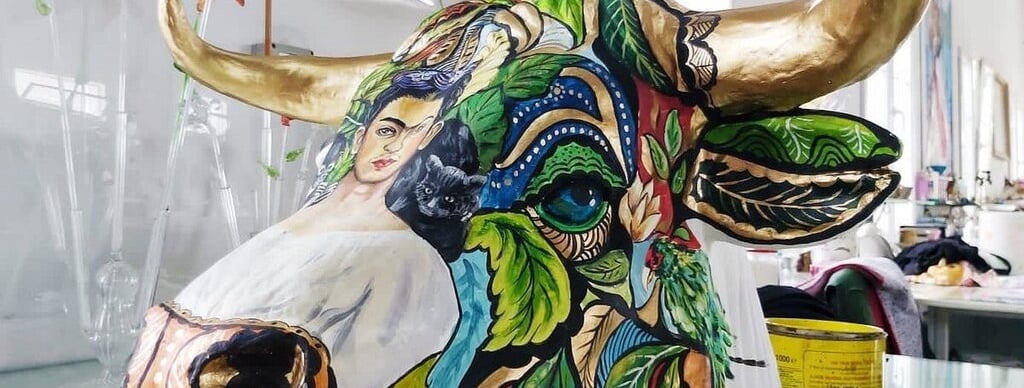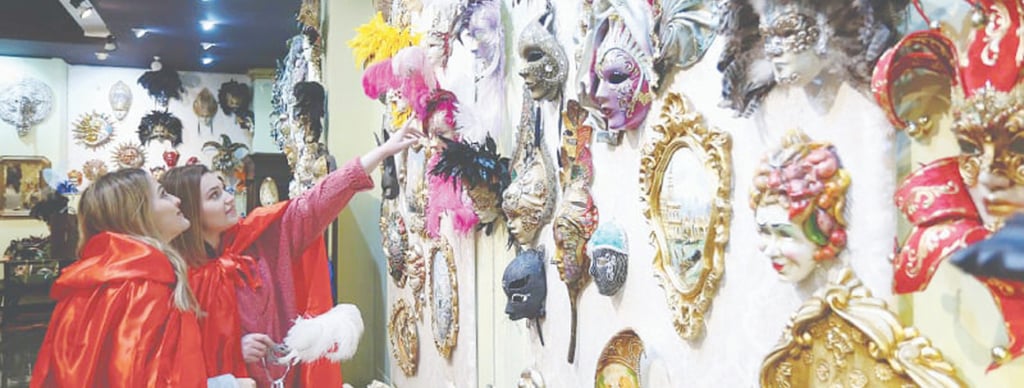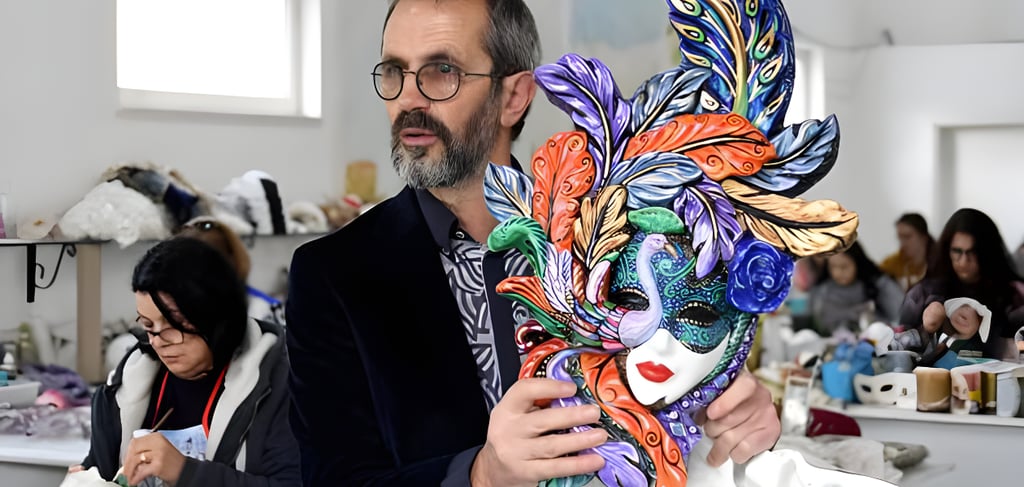Venice Art Mask Factory: Shkodra’s Hidden Carnival of Craft
A surprising journey into the flamboyant world of handmade Venetian masks, in the most unexpected place—northern Albania.


Where Venice Dances in the Balkans
You wouldn’t expect it—nestled in the historical city of Shkodra, known for its medieval castles, Ottoman bridges, and nationalist poets, stands a place that looks like it’s been plucked straight from the Grand Canal. The Venice Art Mask Factory is a riot of color, gold leaf, feathers, and mischief.
This is not a souvenir stand pretending to be more. This is a full-blown, painstakingly authentic, mask-making studio where over 1,700 different designs —some whimsical, others aristocratic— are crafted by hand, the same way they've been made for centuries in Venice.
In short: It’s where the Balkans meet the Baroque, and it’s glorious.
The Origins: A Tale of Two Cities
How did the mystery and opulence of Venetian Carnival masks end up in the north west of Albania?
The story begins with Edmond Angoni, an Albanian artist and craftsman who spent decades in Italy, learning and perfecting the traditional techniques of Venetian mask-making. Angoni wasn’t satisfied with merely replicating designs—he became obsessed with authenticity. Papier-mâché, gesso, gold leaf, hand painting, aging techniques—every step of the process had to match the ancient Venetian ways. No shortcuts. No plastic. No mass production.
But instead of staying in Italy, Angoni brought the art back home.
Why Shkodra? Because, as Edmond himself has put it, art needs roots, and Shkodra—with its long-standing artistic spirit and reputation as a cultural capital of Albania—offered fertile ground. In 2007, the Venice Art Mask Factory was born.
Today, it operates both as a production workshop and a museum, welcoming visitors from all over the world who stumble in expecting a quick peek and walk out completely spellbound.
The Masks: More Than Just Decoration
Let’s get one thing straight: these aren’t carnival trinkets. These are historically grounded, labor-intensive, high-art objects, each one telling a story.
Walk into the showroom and you're instantly transported into another world—rows and rows of Bautas, Morettas, Voltos, Colombinas, and Zannis, each glimmering with its own personality. Some are studded with Swarovski crystals. Others are somber and matte, evoking the eerie anonymity of 18th-century Venice. Some masks laugh. Some leer. Some hide, others reveal.
Here are a few of the iconic styles you’ll encounter:
Bauta: The classic full-face mask with no mouth. Traditionally worn by men, it allowed the wearer to eat, drink, and scheme while remaining anonymous. In Venice, even political votes were once cast while wearing one.
Colombina: Half-mask, often worn by women. Embellished with feathers, jewels, and ribbons, it walks the fine line between flirtation and flamboyance.
Volto (Larva): White, ghost-like, expressionless. A chilling beauty, its name means “face” but also “ghost.” Think of it as the mask for noble ghosts.
Zanni: The grotesquely long nose, derived from the commedia dell’arte. An ancestor of modern caricature and an embodiment of the cunning servant.
Medico della Peste: The plague doctor mask with the long beak. Half terrifying, half fascinating—a reminder that art and disease have danced together more than once in history.
Each mask at the Venice Art Mask Factory is handcrafted using traditional Venetian techniques:
papier-mâché bases, made from natural materials
coated with natural gesso
dried and sanded repeatedly
decorated by hand using acrylic paints, gold and silver foil, antiquing glazes, or precious stones
varnished for longevity
The result? A product that’s as durable as it is dramatic, and unmistakably one-of-a-kind.
Practical Information
Location:
Venice Art Mask Factory
Rruga Edit Durham, Shkodër, Albania
(Located near the southern entrance of the city. Ask locals for “maskat e Venecias” and they’ll point you there with pride.)
Opening Hours:
Monday to Saturday: 10:00 AM – 6:00 PM
Sunday: By appointment only
Admission Fee:
General admission: Free
Guided tour (recommended): 500–1000 ALL depending on group size
Mask-making workshop: On request (great for families or schools)
Languages Spoken:
English, Italian, and Albanian
Duration of Visit:
Plan for at least 45 minutes to 1.5 hours
Accessibility:
Wheelchair accessible, although some parts of the workshop have narrow spaces.
Contact:
📞 +355 (0)69 344 0915
venicemaskshkoder@gmail.com
Instagram: @veniceartmask
Parking:
Available on-site or nearby street parking.
For More Information: https://www.veniceartmaskfactory.com
Final tip: Buy a mask. You’ll regret it if you don't!


A Working Factory That Feels Like a Fantasy
Unlike many museums, this one doesn’t keep its magic behind glass. Visitors are invited to wander among the artisans, to watch them paint, glue, mold, and stitch. The scent of glue and the sound of classical music accompany your tour. It’s theatrical without being performative.
What makes the experience even more delightful is the warmth and knowledge of the staff. You’re not just browsing—you’re immersed in the world of Carnival. The artisans are eager to explain each stage of the process, and if you're lucky, you'll get to try a mask on (and take a selfie worthy of a Renaissance portrait).
For art lovers, it’s a dream. For kids, it’s a wonderland. For Instagrammers, it’s pure gold.
Global Reach, Local Roots
The Venice Art Mask Factory isn’t just a tourist destination—it’s also a supplier of authentic Venetian masks to opera houses, film sets like “Eyes Wide Shut”, theaters, and private collectors around the world. Their masks have traveled far: Vienna, Paris, Tokyo, and even New Orleans’ Mardi Gras.
And yet, all of this happens from a workshop on the edge of Shkodra, a city still recovering from decades of isolation during Albania's communist era. That contrast is part of what makes this place so unique and surreal. Especially since here you are, in a quiet Albanian neighborhood, walking past concrete houses — and suddenly, you step into what feels like a film set in Baroque Venice, in the least expected place.








